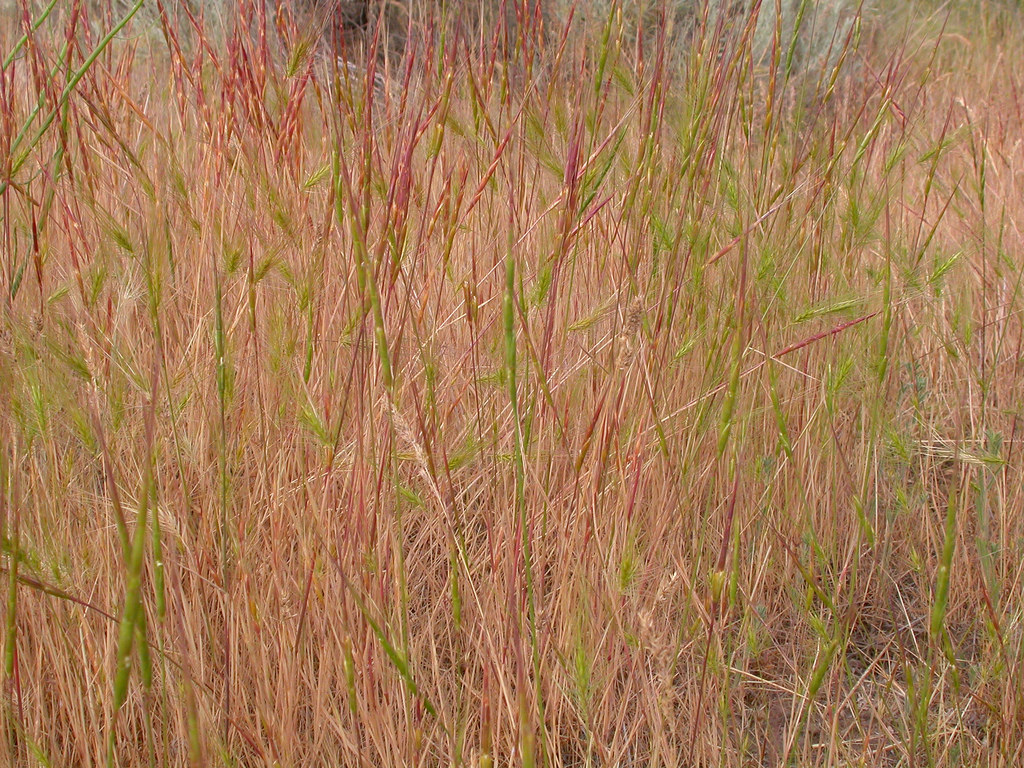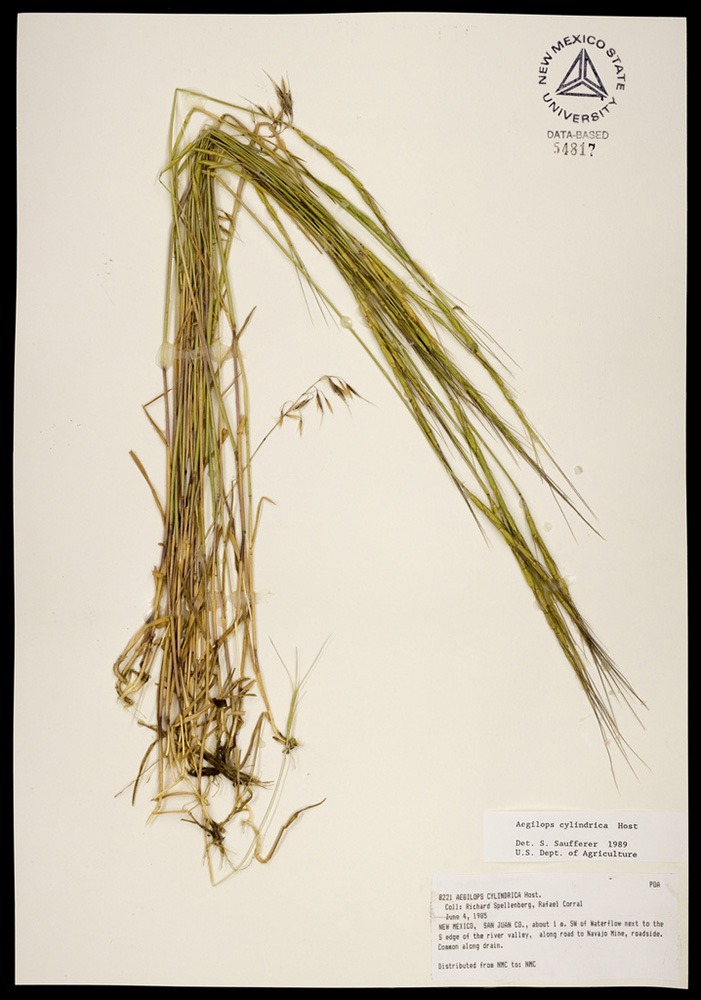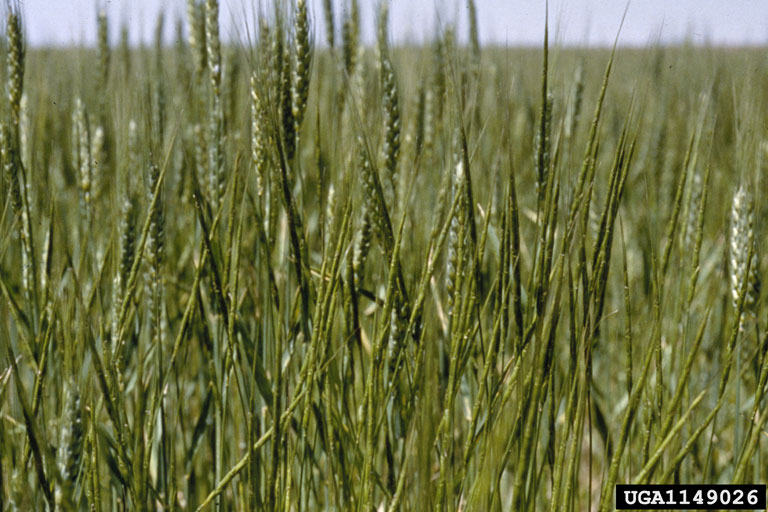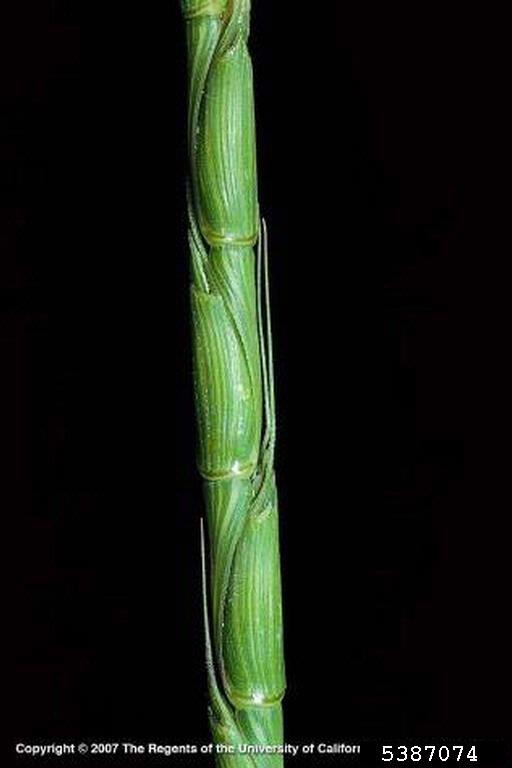Selected Plants of Navajo Rangelands
Goatgrass, jointed

Jointed goatgrass is an introduced, annual grass that has spread into wildlands from winter wheat croplands. It is listed as a noxious weed in Arizona and New Mexico. Plants resemble winter wheat, but seedlings have fine hairs along leaf margins, sheaths, and auricles. The first leaf to emerge on seedling jointed goatgrass is reddish to brownish-green, whereas wheat tends to emerge as a whitish-green leaf.
Stems are hollow and may be upright, slightly lying down, or abruptly bent near the base. Stems branch at the base; the stems that branch off the main stem are called tillers. Jointed goatgrass is a primary concern within or near winter wheat fallow production areas where the species can contribute to reduced yield, loss of profitability, and degraded land values. Preventing the introduction of jointed goatgrass should be the key objective when managing this weedy species. The best way to prevent introduction is to always use certified weed-free seed from a reliable seed source when planting winter wheat in any wildland situations.
Once jointed goatgrass is established, it spreads solely via seed. Control strategies should focus on removing seed production and reducing the opportunity for germination of seed already present in the soil. In most cases, several years of treatment are necessary to control jointed goatgrass.





©2018 NMSU Board of Regents.
Individual photographers retain all rights to their images.
Partially funded by the
Western Sustainable
Agriculture Research and Education Program
(westernsare.org; 435.797.2257),
project EW15-023.
Programs and projects supported by Western SARE are
equally open to all people.